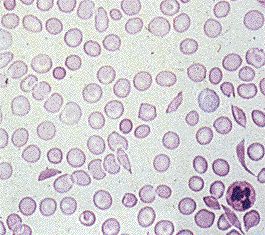The theory of natural selection (part 2) - Why does sickle cell anemia persist at high frequencies?

Estimating relative fitnesses
Once the heterozygote had been shown physiologically to be at an advantage, the adult genotype frequencies can be used to estimate the relative fitnesses of the three genotypes. The fitnesses are:
| Genotype | AA | AS | SS |
|---|---|---|---|
| Fitness | 1-s | 1 | 1-t |
If the frequency of the gene A = p and of S is q , then the relative genotype frequencies among adults will be:
p² (1-s ) : 2pq : q² (1-t ).
If there were no selection (s =t =0), the three genotypes would have Hardy-Weinberg frequencies of p 2: 2pq :q 2. Selection causes deviations from the Hardy-Weinberg frequencies.
The method is only valid if the deviation from Hardy-Weinberg proportions is caused by heterozygous advantage and the genotypes differ only in their chance of survival (not their fertility). If heterozygotes are found to be in excess frequency in a natural population, it may indeed be because the heterozygote has a higher fitness, but there are other reasons. Disassortative mating, for instance, can produce the same result.
But for sickle cell anemia, the physiological observations showed that the heterozygote is fitter and the procedure is well justified. Indeed, in this case, although it has not been checked whether mating is random, the near lethality of SS means that disassortative mating will be unimportant; however, the assumption that the genotypes have equal fertility may well be false.
| Next |



